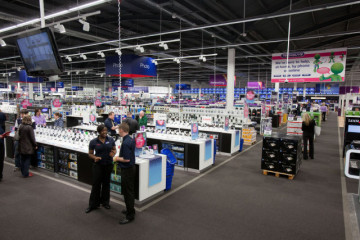 Security outfits Thales and Gemalto have reached a merger agreement.
Security outfits Thales and Gemalto have reached a merger agreement.
The pair have settled on an all-cash offer for all issued and outstanding ordinary shares of Gemalto, for a price of €51 per share.
Patrice Caine, Thales’s Chairman and Chief Executive Officer, said that the acquisition of Gemalto was a milestone in the implementation of Thales’s strategy.
“Together with Gemalto’s management, we have big ambitions based on a shared vision of the digital transformation of our industries and customers. Our project will be beneficial to innovation and employment, whilst respecting sovereign strategic technologies.”
He said the pair share the same culture and DNA which must have been a traumatic merger meeting.
It means that Gemalto’s 15,000 employees will join the group to make a significant digital security player.
Philippe Vallée, Gemalto’s Chief Executive Officer, said: “I am convinced that the combination with Thales is the best and the most promising option for Gemalto and the most positive outcome for our Company, employees, clients, shareholders and other stakeholders. We share the same values and Gemalto will be able to pursue its strategy, accelerate its development and deliver its digital security vision, as part of Thales.”
Over the past three years, Thales has increased its focus on digital technologies, investing over €1 billion in connectivity, cybersecurity, data analytics and artificial intelligence, in particular with the acquisition of Sysgo, Vormetric and Guavus. The integration of Gemalto, reinforces Thales’s digital offering, across its five vertical markets – aeronautics, space, ground transportation, defence and security.
Altogether, this new business unit will represent around 20 percent of pro forma Group revenues and rank among the top three players worldwide, with €3.5 billion revenues in the digital security market.
Apparently, according to the spinners: “Thales will be ideally positioned to offer an end-to-end solution, to secure the full critical digital decision chains, from data creation in sensors to real-time decision making. This unrivalled and innovative technology portfolio will put Thales in a highly differentiated position to provide enterprises and governments with a seamless response to the data security challenges that lie at the heart of their digital transformation.”
Whatever that means.



















